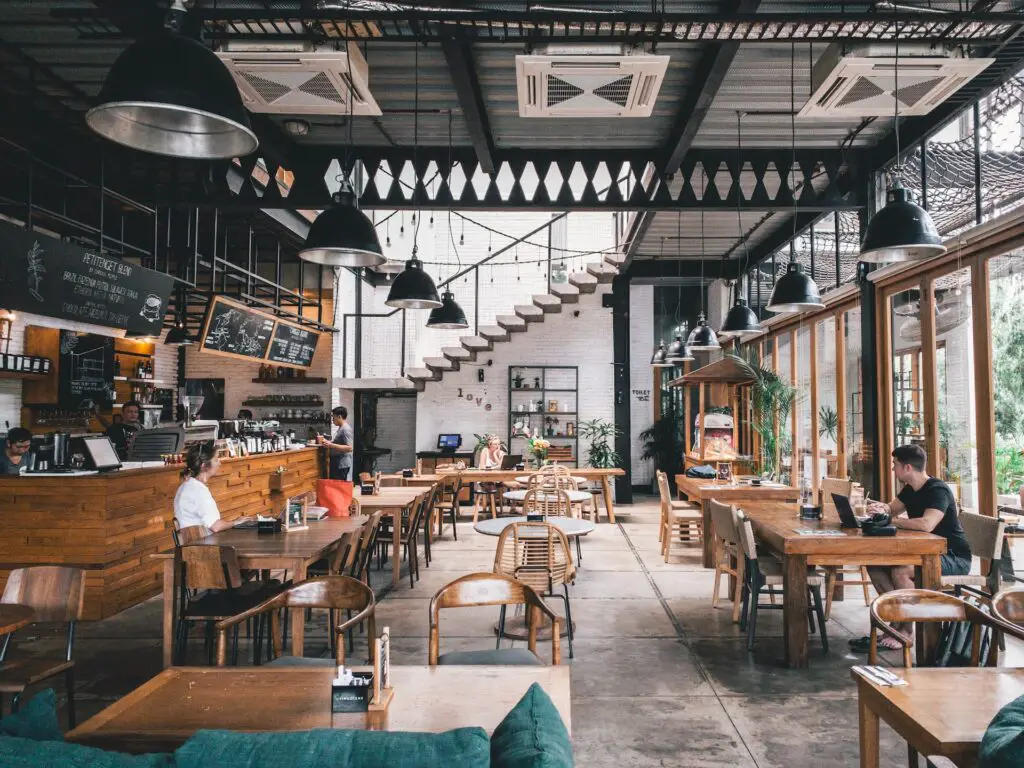Hospitality interior design is an art form that requires a great deal of creativity and skill. It’s all about creating a space that not only looks beautiful but also provides a comfortable, inviting atmosphere for guests to enjoy.

Whether you’re designing the lobby of a hotel or the dining area of a restaurant, there are certain principles and techniques you can use to make sure your hospitality interior design stands out from the rest. From choosing colors and textures to incorporating functional elements like seating, lighting, and storage solutions – this guide will help you create stunning interiors that make your customers feel right at home.
Consider the target audience
When it comes to hospitality interior design, a key factor in success is considering the target audience for the property. Researching into the demographics of who will be staying is essential, and can determine what design elements appeal to them specifically.
For example, if your target market is young professional couples, you may consider incorporating abstract artwork or modern furniture designs. However, if your target market is families, you may choose to have more homely pieces such as vintage furniture and framed family photos. Identifying the right target audience before designing any elements can help set the tone for a successful hospitality property.
Utilize color and lighting to create a cohesive atmosphere

When it comes to hospitality interior design, a key factor in success is considering the target audience for the property. Researching into the demographics of who will be staying is essential, and can determine what design elements appeal to them specifically.
According the team from Interior Design 2 U, color and lighting play an important role in hospitality interiors. In particular, warm tones are ideal for creating a more inviting atmosphere. When combined with the right lighting, this can give the room a cozy feel that customers will appreciate.
In addition to colors and lighting, think about other design elements such as wallpapers or flooring materials that can create a unique atmosphere for the property.
Incorporate functional and stylish furniture
Incorporating functional furniture can be an excellent way to improve any hospitality interior design. For example, a comfortable and stylish daybed combined with tufted benches creates a seating area that is perfect for relaxing, while also adding visual interest to the space. An upholstered bench placed beneath a window adds extra seating while providing eye-catching texture and colour.
A coffee table that offers both open and concealed storage can easily keep small items organized without taking up too much space. Choosing furniture pieces with thoughtful detail will improve the look of any hospitality interior design and provide guests with items that are both useful and aesthetically pleasing.
Invest in high-quality finishes and materials

Enhancing your hospitality interior design might seem daunting, but investing in high-quality finishes and materials is an excellent place to start. Materials such as luxury vinyl tiles, hardwood flooring, and quality carpets provide the perfect canvas for a comfortable and stylish space. Not only are these materials durable and require little maintenance, they also look chic and sophisticated, giving you a great foundation to build your interior on.
Additionally, choose high-end finishes such as custom printed wallpaper or statement lighting fixtures that can bring any room to life. Quality products will ensure your guests have the best experience possible while staying with you.
Incorporate local and cultural elements
Incorporating local and cultural elements into a hospitality interior design is a great way to create inviting spaces that reflect the area and show visitors what the surrounding community has to offer.
Think of the local landscape, historical context, and cultural influences present in the region. Incorporate artwork from nearby galleries or artisans, use textiles derived from traditional patterns or materials found locally, add unique furniture that reflects traditional techniques or craftsmanship; there is an unlimited amount of ways you can draw on the history around you. Not only does this decorating approach give your space a truly unique feel, it also helps develop meaningful connections with guests through the items included in your design.
Conclusion

By incorporating local and cultural elements, high-quality materials and finishes, functional furniture pieces and considering the target audience before designing any element can help create a successful hospitality interior design. These are just some of the ways that you can bring your space to life while providing visitors with an unforgettable experience.
With careful planning and thoughtful consideration of each detail, you can make sure that your property stands out from the rest. Whether it’s through artwork or textiles inspired by nearby galleries or artisans, custom printed wallpaper or statement lighting fixtures; investing in quality products will ensure guests have the best possible stay at your establishment.
Thanks to interiordesign2u.com.my for consulting on this post.
























